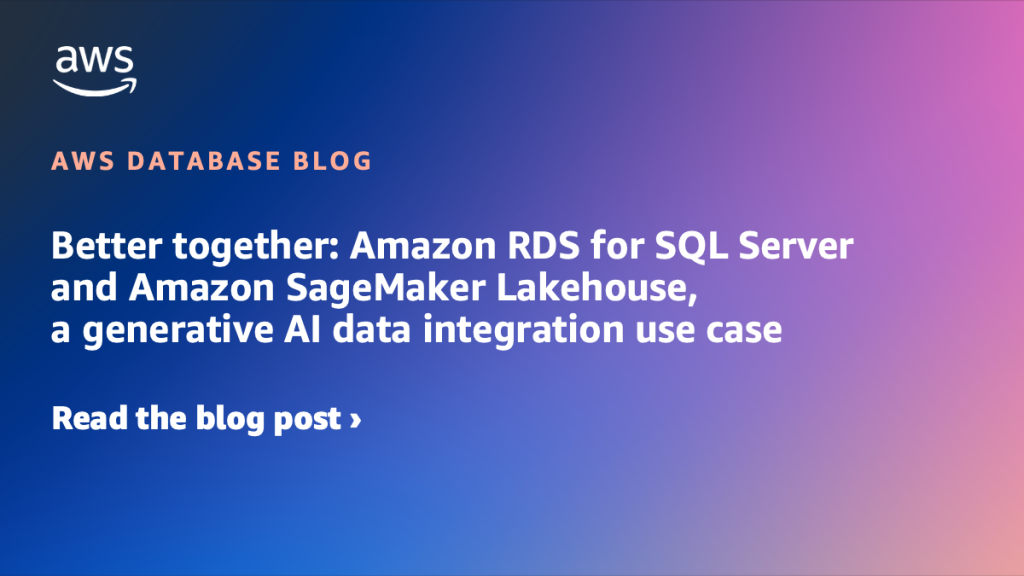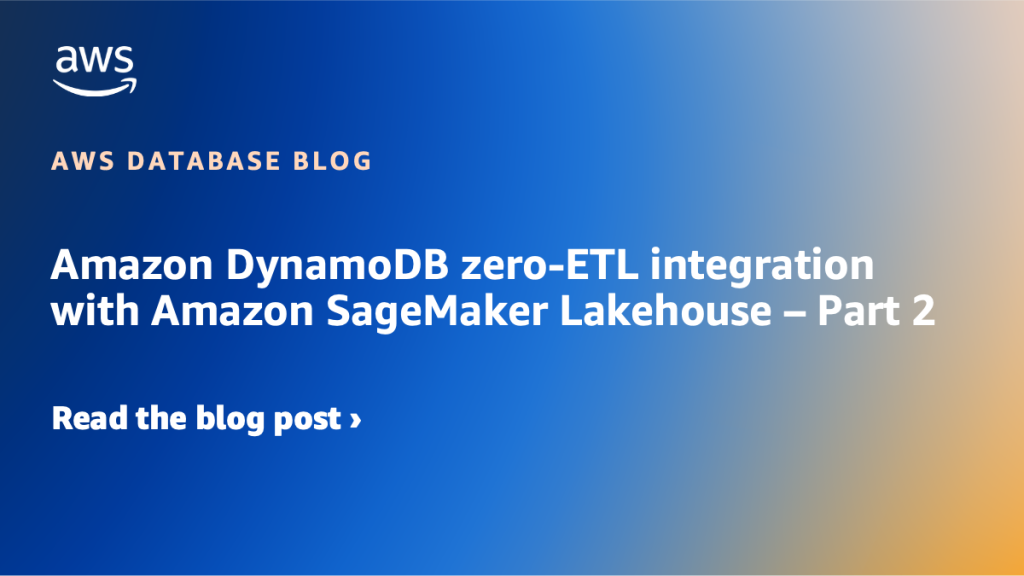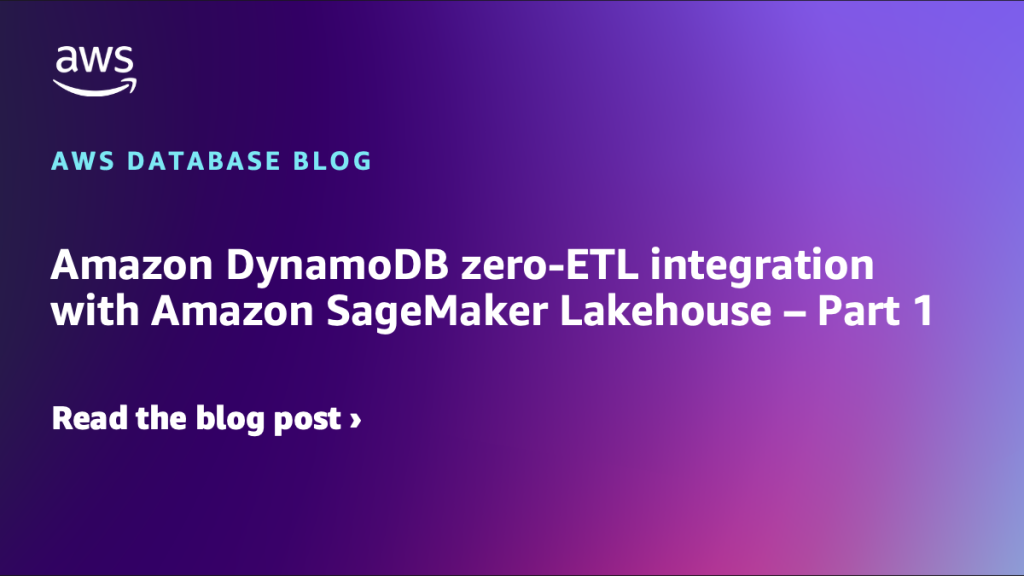AWS Database Blog
Category: Amazon SageMaker Unified Studio
Better together: Amazon RDS for SQL Server and Amazon SageMaker Lakehouse, a generative AI data integration use case
Generative AI solutions are transforming how businesses operate worldwide. It has now become paramount for businesses to integrate generative AI capabilities into their customer-facing services and applications. The challenge they often face is the need to use massive amounts of relational data hosted on SQL Server databases to contextualize these new generative AI solutions. In this post, we demonstrate how you can address this challenge by combining Amazon RDS for SQL Server and Amazon SageMaker Lakehouse.
Amazon DynamoDB zero-ETL integration with Amazon SageMaker Lakehouse – Part 2
Amazon DynamoDB zero-ETL integration with Amazon SageMaker Lakehouse allows you to run analytics workloads on your DynamoDB data without having to set up and manage extract, transform, and load (ETL) pipelines. In this post we cover setting up Amazon SageMaker Unified Studio, followed by running data analysis to showcase its capabilities. We illustrate our solution walkthrough with an example of a credit card company that wants to analyze its customer behavior and spending trends.
Amazon DynamoDB zero-ETL integration with Amazon SageMaker Lakehouse – Part 1
Amazon DynamoDB zero-ETL integration with Amazon SageMaker Lakehouse allows you to run analytics workloads on your DynamoDB data without having to set up and manage extract, transform, and load (ETL) pipelines. In this two-part series, we first walk through the prerequisites and initial setup for the zero-ETL integration. In Part 2, we cover setting up Amazon SageMaker Unified Studio, followed by running data analysis to showcase its capabilities. We illustrate our solution walkthrough with an example of a credit card company that wants to analyze its customer behavior and spending trends.


